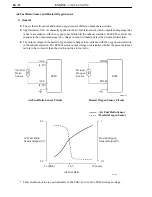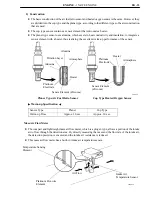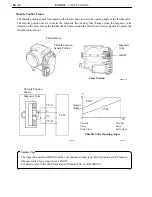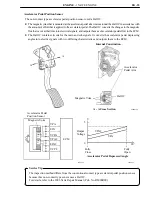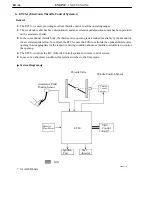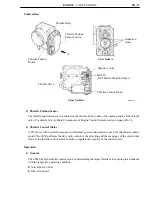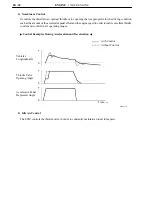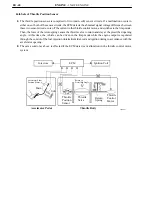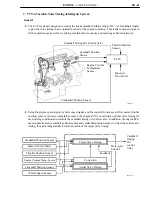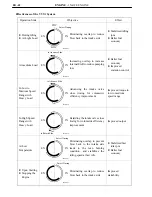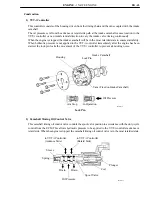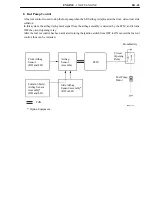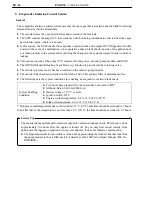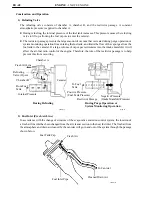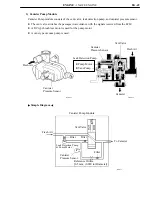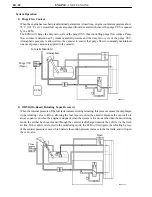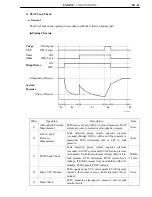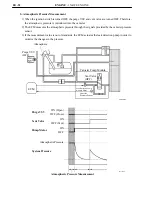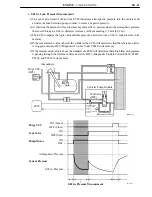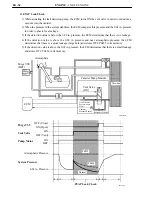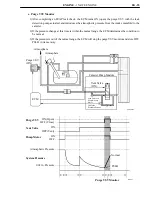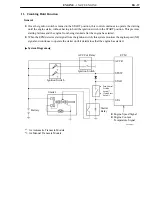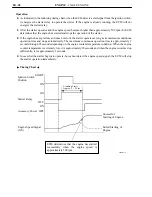
ENGINE - 1NZ-FE ENGINE
Service Tip
The canister pump module performs fuel evaporative emission leakage check. This check is done
approximately five hours after the engine is turned off. So you may hear sound coming from
underneath the luggage compartment for several minutes. It does not indicate a malfunction.
The pinpoint pressure test procedure is carried out by pressurizing the fresh air line that runs from
the pump module to the air filler neck. For details, see the 2006 Yaris Repair Manual (Pub. No.
RM00R0U).
EG-46
9. Evaporative Emission Control System
General
The evaporative emission control system prevents the vapor gas that is created in the fuel tank from being
released directly into the atmosphere.
The canister stores the vapor gas that has been created in the fuel tank.
The ECM controls the purge VSV in accordance with the driving conditions in order to direct the vapor
gas into the engine, where it is burned.
In this system, the ECM checks the evaporative emission leak and outputs DTC (Diagnostic Trouble
Codes) in the event of a malfunction. An evaporative emission leak check consists of an application of
a vacuum pressure to the system and monitoring the changes in the system pressure in order to detect a
leakage.
This system consists of the purge VSV, canister, refueling valve, canister pump module, and ECM.
The ORVR (Onboard Refueling Vapor Recovery) function is provided in the refueling valve.
The canister pressure sensor has been included to the canister pump module.
The canister filter has been provided on the fresh air line. This canister filter is maintenance-free.
The followings are the typical conditions for enabling an evaporative emission leak check:
Typical Enabling
Condition
Five hours have elapsed after the engine has been turned OFF*.
Altitude: Below 2400 m (8000 feet)
Battery voltage: 10.5 V or more
Ignition switch: OFF
Engine coolant temperature: 4.4 to 35
C (40 to 95
F)
Intake air temperature: 4.4 to 35
C (40 to 95
F)
*: If engine coolant temperature does not drop below 35
C (95
F), this time should be extended to 7 hours.
Even after that, if the temperature is not less than 35
C (95
F), the time should be extended to 9.5 hours.
Summary of Contents for 1NZ-FE
Page 59: ...EG 60 MEMO ...

